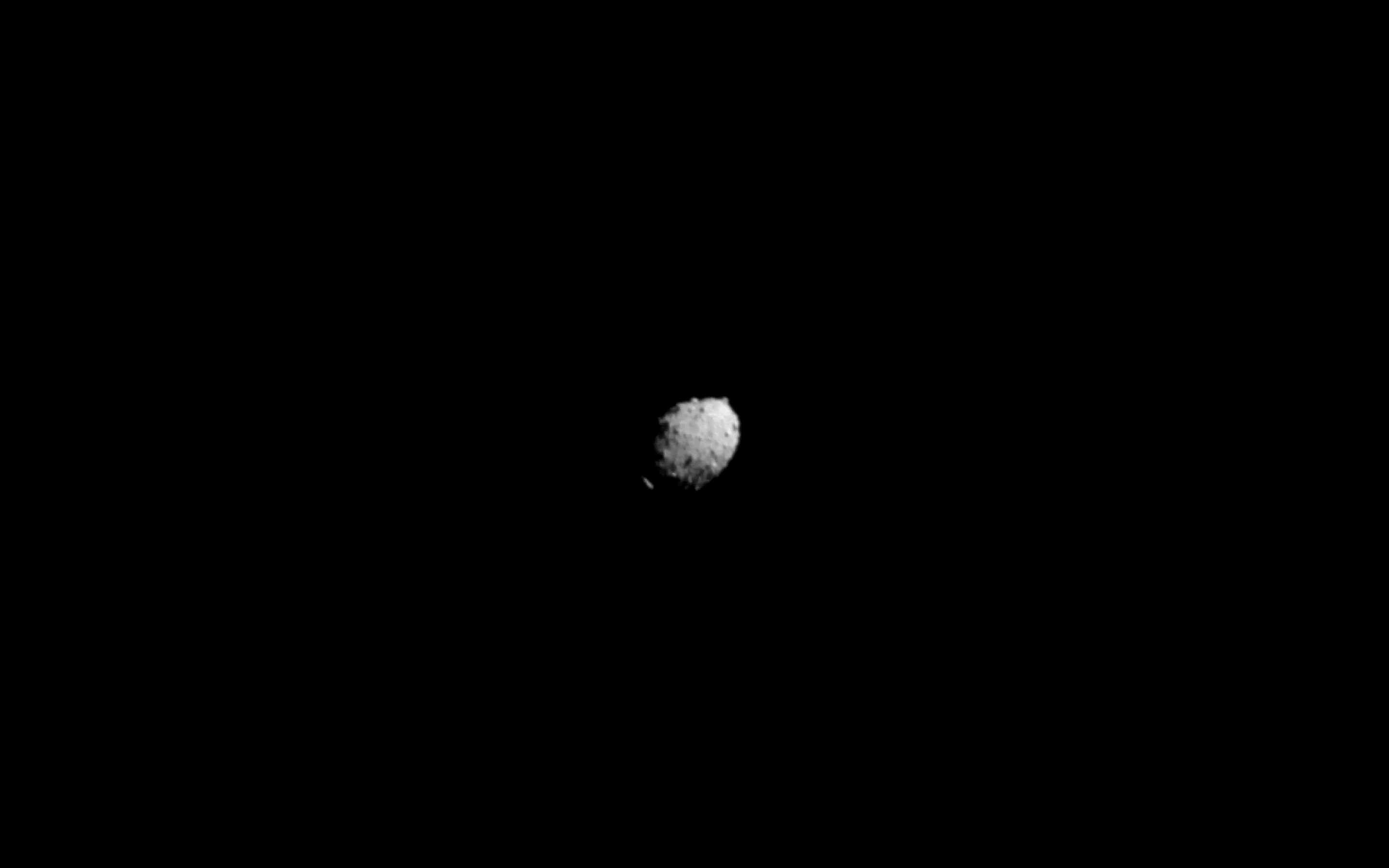Watch NASA's DART spacecraft hit 'bullseye' by smashing into an asteroid
The craft traveled 7 million miles (11 million kilometers) and hit just 56 feet (17 meters) off center.

NASA's asteroid smashing spacecraft completed its spectacular doomed attack on a distant asteroid last night, and we already have three awe-inspiring videos of the event.
The Double Asteroid Redirection Test (DART) spacecraft collided with the 7 million mile (11 million kilometer) distant asteroid Dimorphos at 7:14 p.m. ET on Monday (Sept. 26) in humanity's first attempt to alter an asteroid's trajectory.
DART recorded and beamed back its final moments with its onboard Didymos Reconnaissance and Asteroid Camera for Optical Navigation (DRACO), which was also responsible for automatically navigating the spacecraft onto its collision course. As DART came ever closer to the space rock, its camera feed showed the asteroid's landscape bloom from a single pale gray pixel to a rough and craggy terrain strewn with sharp, shadowy rocks.
Related: What happened when the dinosaur-killing asteroid slammed into Earth?
"We saw that we were going to impact. This asteroid was coming into the field of view for the first time. We really had no idea what to expect," Elena Adams, a mission systems and the spacecraft systems engineer for the DART mission, said at a news conference after the event. "All of us were kind of holding our breaths."
Then the recording cuts out. Adams said that DART had hit the 525-feet-wide (160 meters) Dimorphos just 56 feet (17 m) from its exact center — an astronomical "bullseye." At mission control at the Johns Hopkins University Applied Physics Laboratory (APL) in Laurel, Maryland, cheers erupted from the mission scientists.
"As far as we can tell, our first planetary defense test was a success," Adams said at the news conference. "I think Earthlings should sleep better. Definitely, I will."
Sign up for the Live Science daily newsletter now
Get the world’s most fascinating discoveries delivered straight to your inbox.
Two other videos were also taken of the crash by two terrestrial telescopes. The Hawaiian Asteroid Terrestrial-impact Last Alert System and one of Las Cumbres Observatory's South African telescopes both captured videos of the impact — showing a bright puff of dust and rubble plume from Dimorphos at the moment of impact.
These won't be the only telescopes put to use to study the impact. NASA's James Webb Space Telescope and Hubble Space Telescope, and the agency's Lucy spacecraft will also train their lenses on the asteroid to study the impact's aftermath. Their observations will help scientists understand how much force is needed to successfully divert an asteroid from our planet.
Closer to the space rock, scientists will get a better picture of the impact's immediate aftermath by turning to the Italian space agency's LICIACube — a smaller "cubesat" spacecraft that split from DART on Sept. 11. Now orbiting Dimorphos at a distance of 34 miles (55 kilometers), LICIACube will beam photos back to Earth of how the asteroid's trajectory has been changed and how the collision caused material to be thrown out by the impact.
These initial observations will be followed up by the European Space Agency's Hera mission, which will arrive at Didymos and Dimorphos in 2026 to study the long-term effects of the crash and judge the success of the $330 million mission.
Ralph Semmel, the director of the Johns Hopkins University APL, said that the impact represented an "historic accomplishment" and was a "game-changing" first demonstration of humanity's ability to protect itself from future asteroid threats.
"Normally, losing signal from a spacecraft is a very bad thing. But in this case, it was the ideal outcome," he said at the news conference.
Originally published on Live Science.

Ben Turner is a U.K. based staff writer at Live Science. He covers physics and astronomy, among other topics like tech and climate change. He graduated from University College London with a degree in particle physics before training as a journalist. When he's not writing, Ben enjoys reading literature, playing the guitar and embarrassing himself with chess.










